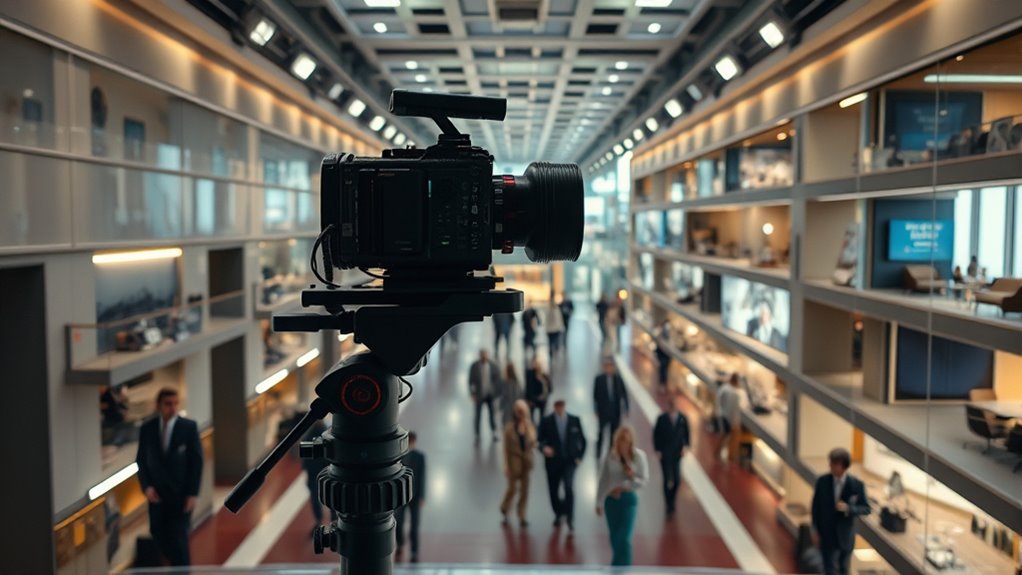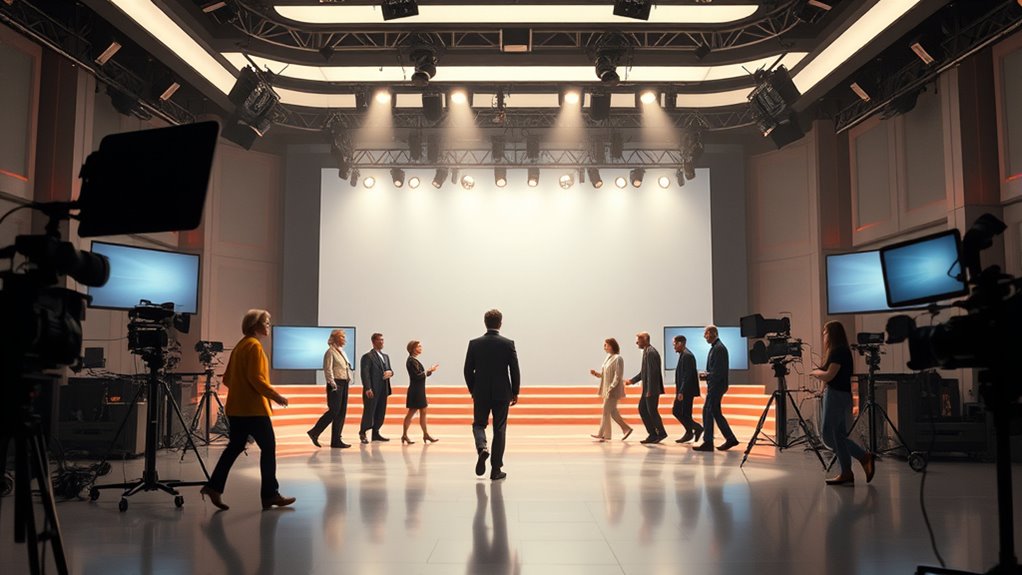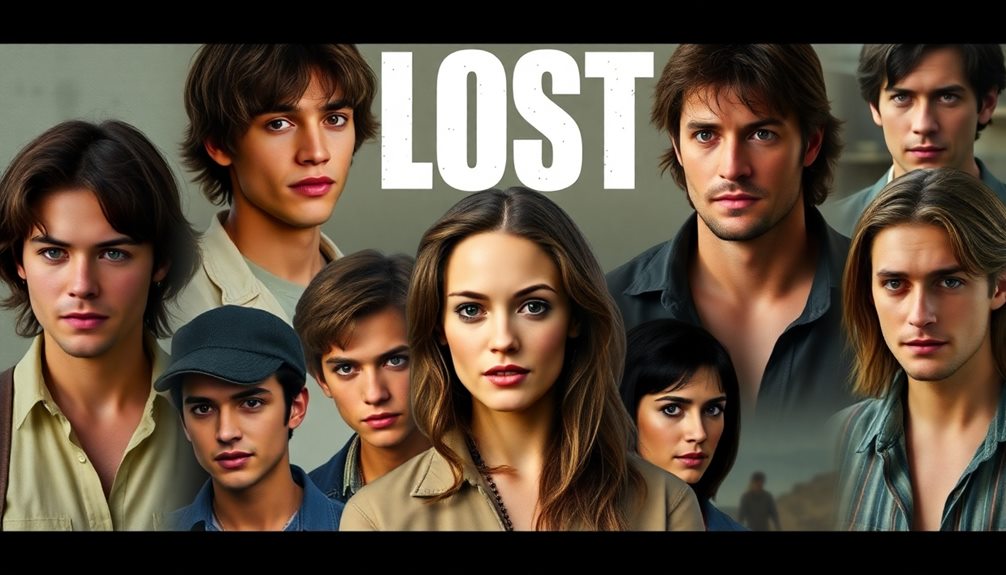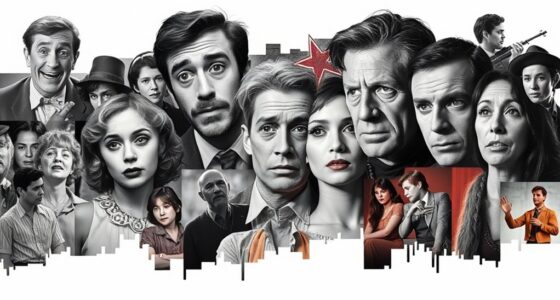Continuous-take episodes in TV have roots in early filmmaking, but they gained popularity with advances in HD cameras and editing tools. Shows like “True Detective” and films such as “Birdman” demonstrated how long takes can heighten tension and create a sense of realism. These episodes transform scenes into immersive, seamless moments that keep viewers engaged and emotionally connected. Keep exploring to discover more about how this technique continues to evolve and influence storytelling.
Key Takeaways
- Continuous-take episodes in TV evolved from early experimental techniques, gaining prominence with technological advances in high-definition cameras.
- Influenced by cinematic examples like “Birdman,” TV shows adopted long takes to heighten tension and realism.
- Pioneering series such as “True Detective” popularized long takes, demonstrating their storytelling power in television.
- The technique requires meticulous planning, choreography, and technical skill to achieve seamless, immersive scenes.
- Today, continuous takes are a key tool in TV storytelling, fostering immediacy, engagement, and emotional depth.

Continuous‑take episodes, also known as long takes, have fascinated audiences and filmmakers alike for decades because they create a sense of immediacy and immersion. These cinematic techniques draw viewers into the story in a way that standard editing cannot, making you feel as if you’re right there with the characters, experiencing every moment in real time. As a viewer, you might notice how seamless and fluid these scenes appear, which heightens your engagement and emotional investment. For creators, using long takes offers an opportunity to craft visually compelling narratives that challenge traditional storytelling methods and showcase technical prowess.
Long takes immerse viewers, blending seamless visuals with storytelling to heighten emotional engagement and showcase technical skill.
Historically, the use of continuous‑take episodes in television has evolved considerably. Early on, filmmakers and directors experimented with long takes to elevate their storytelling, often in film rather than TV. It wasn’t until the advent of high-definition cameras and more sophisticated editing tools that TV shows started adopting this technique more prominently. Shows like “True Detective” and “Birdman” helped popularize the long take in visual storytelling, demonstrating how it could heighten tension or add a layer of realism. These episodes don’t just serve as a stylistic flourish; they become a fundamental tool for engaging the audience on a deeper level. When you watch a continuous‑take scene, you’re less likely to feel detached or distracted by editing cuts because your focus remains uninterrupted, allowing you to become fully absorbed in the narrative flow.
The technical challenge of executing long takes in TV is considerable. Directors must choreograph every movement, from camera angles to actor blocking, with precision. This meticulous planning ensures that the scene unfolds smoothly, maintaining visual coherence and narrative clarity. When done successfully, the result is a mesmerizing experience that amplifies audience engagement. It’s not just about showing off technical skill—though that plays a part—it’s about creating an authentic, visceral connection to the story. As a viewer, you’re left with a heightened sense of realism, as if the story is unfolding live before your eyes. This immersive quality is what makes continuous‑take episodes a powerful storytelling device, transforming simple scenes into memorable moments that resonate long after the episode ends. Additionally, advancements in filmmaking technology have made executing these complex scenes more feasible, allowing directors to push creative boundaries further.
In essence, the history of continuous‑take episodes in TV reflects a broader pursuit of innovation in cinematic techniques aimed at captivating audiences. By pushing the boundaries of traditional editing, these episodes forge a more visceral, immediate connection between the story and viewer, making them a remarkable and enduring aspect of television storytelling.
Frequently Asked Questions
Which TV Show Pioneered the Continuous-Take Episode Format?
You’ll find that “True Detective” season 1 pioneered the continuous-take episode format, showcasing innovation in storytelling. This approach captivates the audience, immersing you in the scene with seamless camera work. By breaking traditional editing rules, the show heightens suspense and engagement, making you feel like you’re part of the action. This bold move revolutionized TV storytelling, proving that continuous takes can deepen emotional impact and elevate viewer experience.
How Do Directors Plan and Rehearse Long Continuous Shots?
You plan and rehearse long continuous shots by carefully choreographing the camera movement and actors’ actions. Use detailed camera choreography to map each move precisely. Rehearsal strategies involve multiple run-throughs, breaking down the scene into sections, and syncing timing between performers and camera operators. This way, everyone knows their cues, allowing for seamless execution. Focused rehearsals guarantee the shot flows smoothly without mistakes or timing issues.
What Technical Challenges Are Involved in Filming One-Take Episodes?
Like threading a needle through a storm, filming one-take episodes poses unique technical challenges. You must guarantee flawless camera stabilization and seamless actor choreography, so every movement aligns perfectly. Precise timing and coordination are vital, as even small mistakes can ruin the shot. You need advanced equipment, rehearsals, and communication to keep everything smooth, making these episodes a true ballet of technical skill and artistic vision.
Are There Notable Examples of Failed or Problematic Continuous-Take Scenes?
You might notice some continuous-take scenes encounter issues like camera mishaps or actor coordination problems. For example, a camera could wobble or actors might miss a cue, disrupting the flow. These failures often happen due to the complex coordination required, and even small mistakes can make the scene problematic or require reshoots. Despite these risks, many productions push through, aiming for seamless storytelling, but occasional failures remind you of the technical challenges involved.
How Have Viewers’ Perceptions of Storytelling Changed With Continuous Takes?
You probably notice that continuous takes boost audience engagement and deepen narrative immersion, making stories feel more immediate and real. Viewers tend to appreciate the seamless experience, which draws them into the moment without distraction. However, some might find it overwhelming or confusing if not executed well. Overall, these scenes shift perceptions by making storytelling more dynamic, encouraging viewers to stay focused and emotionally connected throughout the scene.
Conclusion
As you can see, continuous‑take episodes have come a long way, transforming how stories are told on TV. They challenge directors, actors, and viewers alike, pushing everyone to stay engaged and on their toes. While it might seem like a tall order at first, these episodes prove that with skill and creativity, you can break new ground in storytelling. In the end, it’s clear that they’re here to stay, and you’d do well to keep an eye on this exciting trend.










